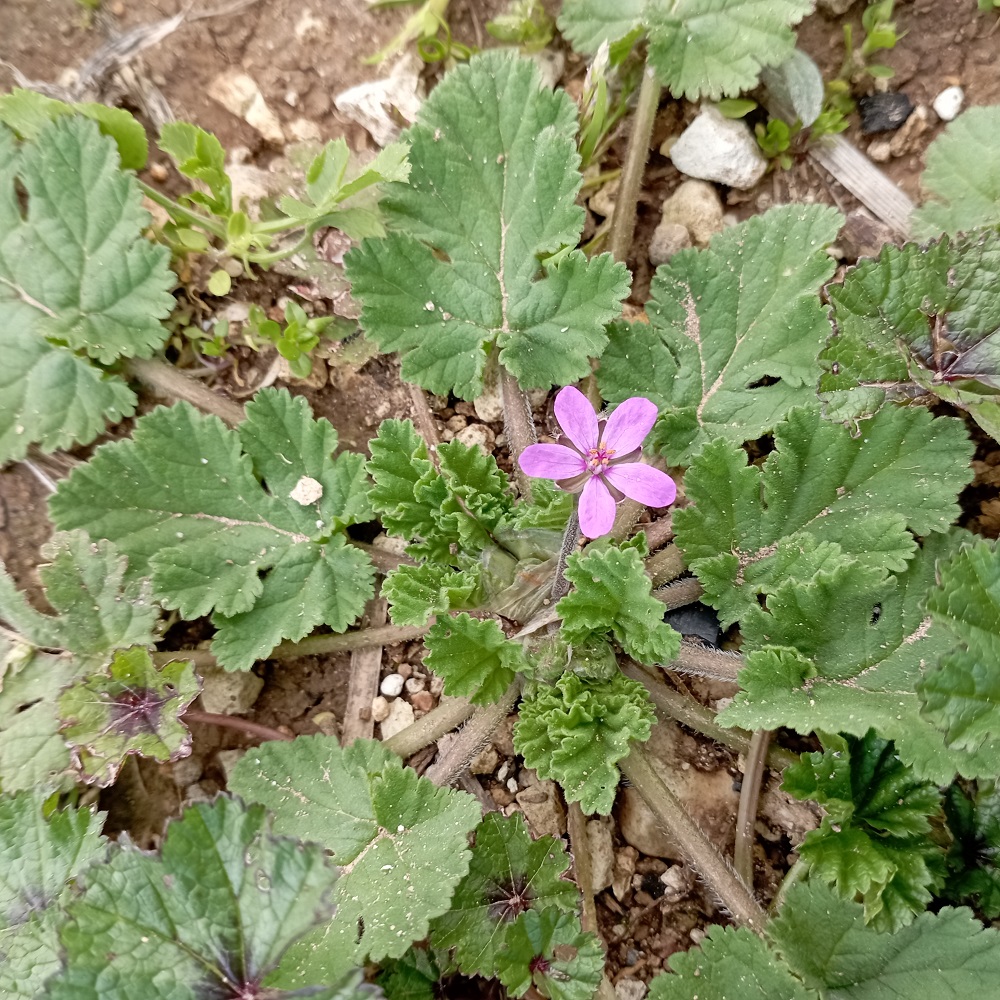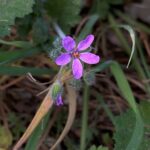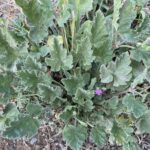Ερωδιός ο μαλακοειδής
Etymology of Erodium malacoides: The name of the genus, "Erodium", derives from the Ancient Greek "ἐρωδιός" [erodios], meaning "heron", due to the long beak on the fruit that gives rise to some of its common names such as storksbill and cranesbill, a meaning reinforced by the family name Geranium, the derivation of which is "γερανός" [yeranos or geranos], meaning "crane". The epithet derives from the Greek neutral "μαλακοειδές" [malakoides], meaning "soft".
At least nine Erodium species and subspecies/kinds have been recognized in Cypriot nature so far.
Erodium malacoides is a common plant in Cyprus. It is an annual or biennial plant reaching up to 60 cm tall. It exists all-around Cyprus, except for the Central Mesaoria region, at an altitude of up to 1375 metres. Erodium malacoides grows on roadsides, cultivated or uncultivated fields, fields' margins and on sandy ground. It usually blooms between December and May.
How to identify Erodium malacoides:
Its basal leaves are large and may resemble the ones of the Malva genus and the upper leaves are much smaller than the basal and triangular; Its leaves are distinctly glandular below, with sessile, shining glands; its flowers are small, less than 2 cm in diameter; its fruiting beak is less than 6 cm long.






